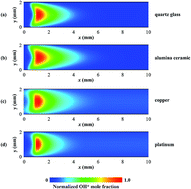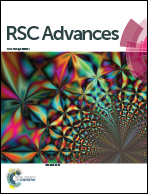Stability limits and chemical quenching of methane–air flame in plane micro-channels with different walls
Abstract
In order to elucidate the effects of wall material on stability limits and chemical quenching behavior, plane micro-channels with different wall materials were evaluated for the premixed combustion of methane–air. Experiments and numerical simulations with detailed chemistry kinetics schemes were carried out to explore the combustion characteristics along with the interaction between homogeneous and surface reactions on platinum, quartz glass, alumina ceramic and copper, and to estimate the effect of initial sticking coefficients associated with radical adsorption on chemical quenching. The experimental results indicate that the stability limits decrease in the order of platinum > copper > quartz glass > alumina ceramic for the different wall materials. The lower thermal conductivity wall leads to higher reaction temperature, which enhances the robustness of micro-flame. The simulation results indicate that chemical effect plays a critical role in the distribution of OH* radical. Homogeneous reaction is significantly inhibited on the platinum surface because of the depletion of reactants rather than the radical adsorption. Radical quenching is the most inhibited on the surface of alumina ceramic. The wall chemical effect on flame becomes very important as micro-channel is smaller than 0.7 mm.


 Please wait while we load your content...
Please wait while we load your content...